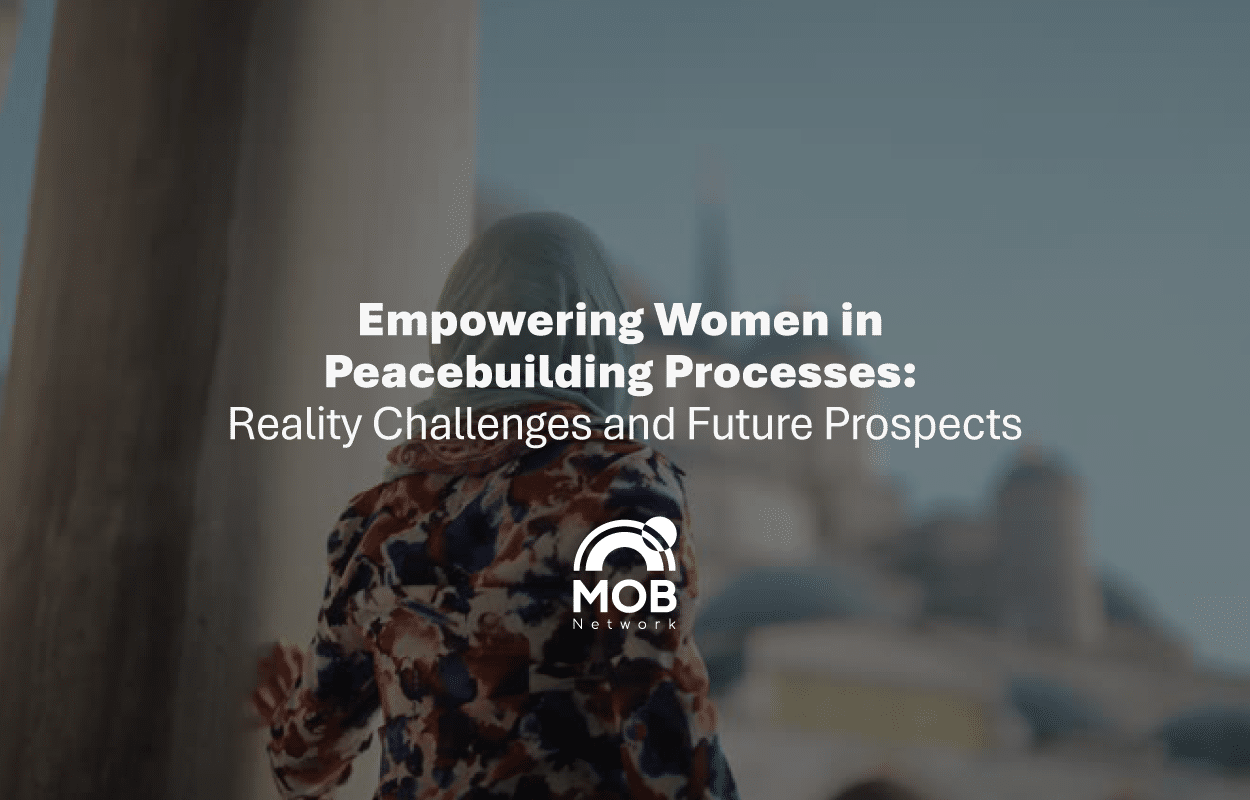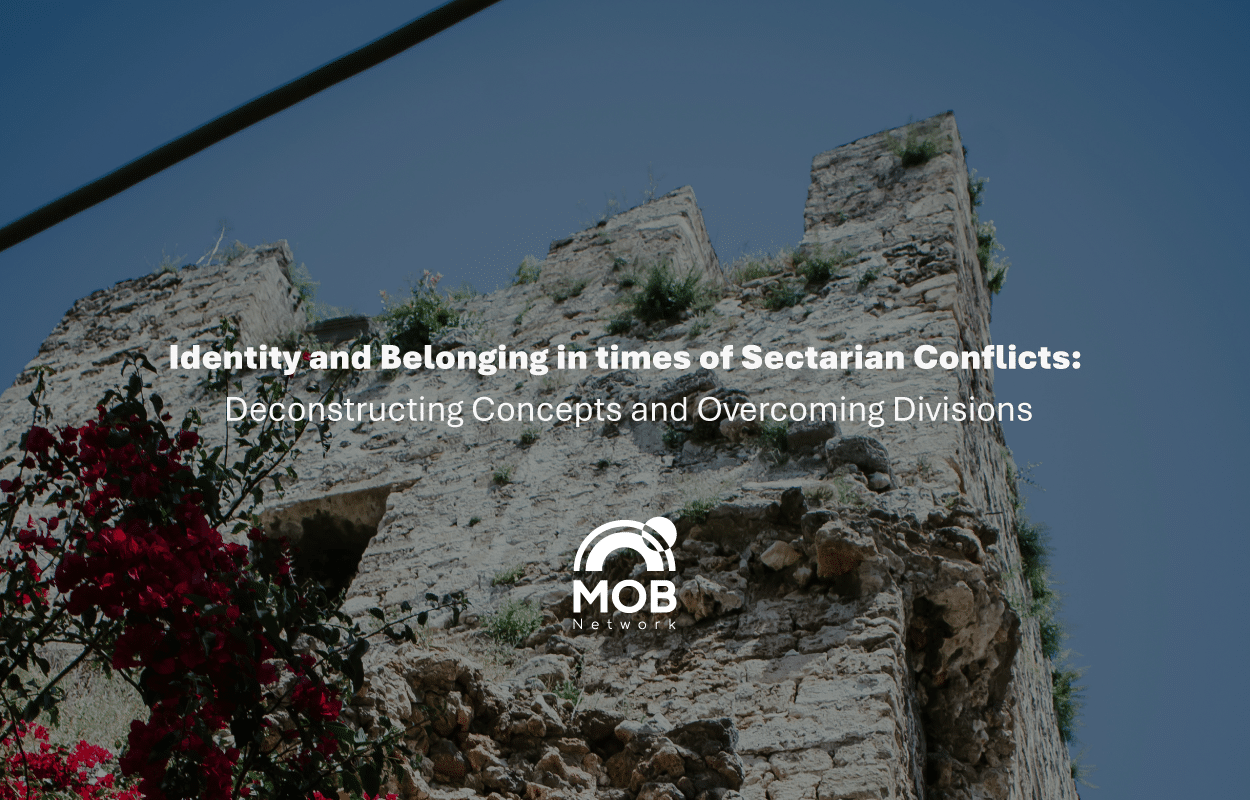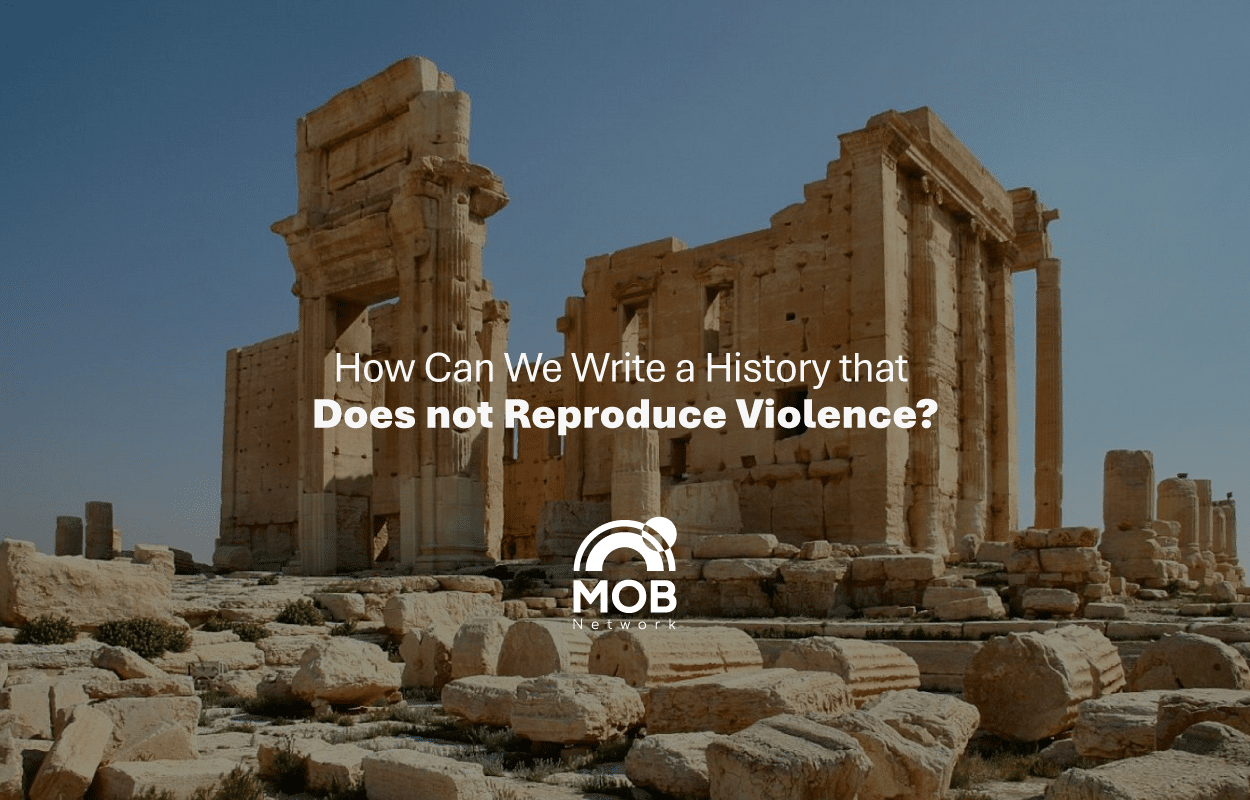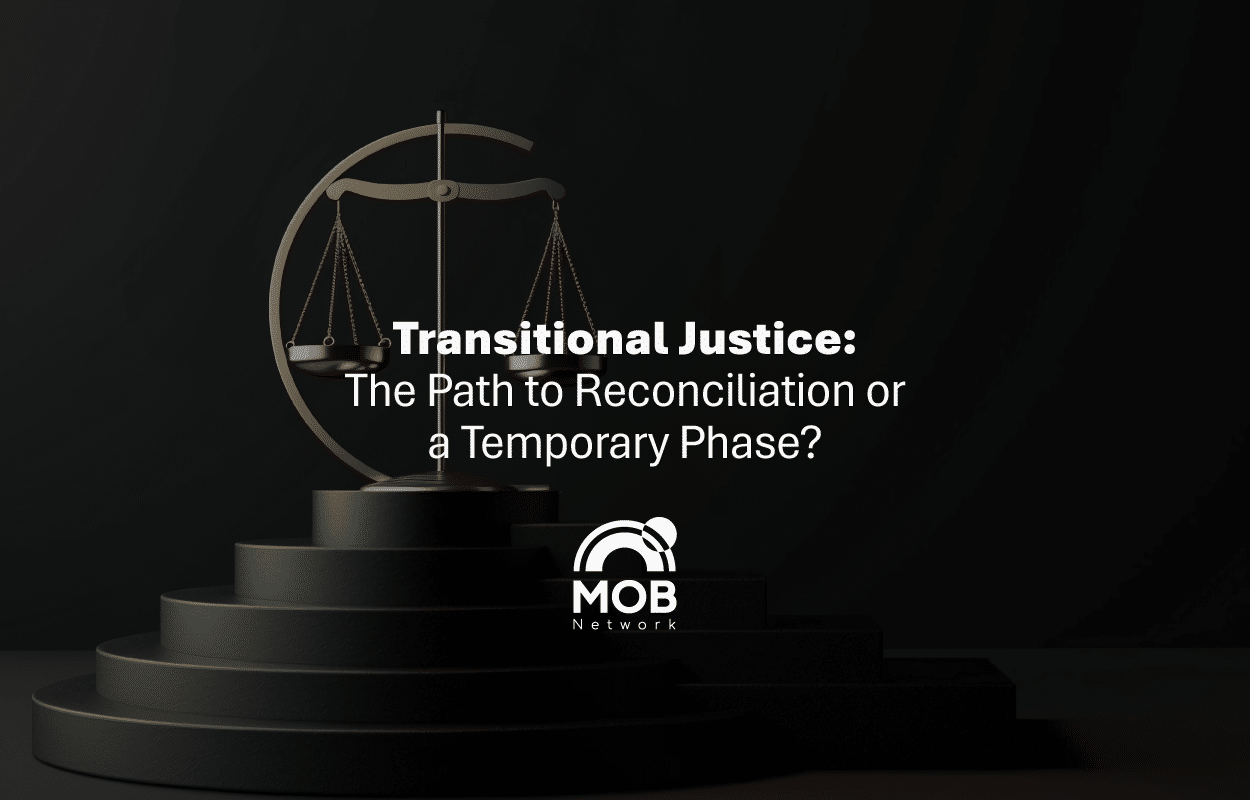In the midst of wars and conflicts, when societies crack and dreams are shattered, women are often on the front lines of suffering… but, what if they were also on the front lines of peacebuilding?
Recent times have proved that the inclusion of women in peace processes is not simply a matter of gender justice, but a necessity for achieving comprehensive and sustainable peace.
However, women continue to face profound structural and cultural challenges that prevent them from effectively engaging in peace negotiations and decision-making. Overcoming these challenges requires genuine political will at the local, national, and international levels, sustained investments, and a radical cultural shift in the perception of women’s roles in peace and security.
Peace is the foundation for the stability and development of societies, but achieving and sustaining it is a complex process. Inside it we find the role of women as an essential role whose effective and equal participation is indispensable.
Why do women make an exceptional difference in the peacebuilding process?
It is not necessary to prove that women “construct better peace,” but rather to deconstruct why they are able to create models of reconciliation tools that men don’t have.
The secret may be about women being experts in the art of survival within torn societies, which gives them a different compass that measures the success of peace by the extent to which a mother can send her child to school without fear, not by the number of constitutional articles signed, for example.
They don’t offer ready-made answers, but rather pose questions that redefine peace itself: Is it an agreement between former militants? Or is it a child’s ability to remember his father without nightmares? In this space between the two definitions, the uniqueness of women’s roles is born.
Studies show that involving women in peace negotiations increases the likelihood of agreements being sustainable by up to 35% and reduces the risk of their failure by 64%.
These numbers are not just motionless data, but reflect a human reality: women, by their experiences in the life of communities, bring holistic perspectives that touch people’s daily lives, from education and health to transitional justice and community reconciliation. In many cases, women possess a negotiating style that focuses on communication, dialogue, and empathy, which contributes to creating an environment of mutual respect and trust rather than direct confrontation.
Also studies show that this humanitarian approach enhances communities’ ability to overcome their differences and build sustainable solutions to conflicts.
Their presence at the negotiating table brings about a qualitative shift, expanding the definition of “peace” to include social, cultural, and economic dimensions.
“When women participate meaningfully in peace processes, the results are more inclusive and last longer.”
Katherine Marshall Interview 2020 Tweet
Structural Barriers: obstructive barrier That Hinder Participation
Despite the clear evidences that highlights the true value of women’s role in peacebuilding processes, women face a series of deeply rooted structural obstacles:
1. Exclusion from Formal Negotiations:
Formal negotiating tables remain places of male dominance, with women excluded from effective participation.
For example, UN Security Council data indicates that women constituted an average of only 13% of negotiators and 6% of mediators and signatories in key deals between 1992 and 2019, reflecting the continued dominance of power structures based on traditional patriarchal norms in which security and political spheres are considered the domain of men.
2. Weak Political Representation:
The limited representation of women in legislative and executive bodies reduces their opportunities to influence peace policy formulation.
Women’s political empowerment is inseparable from their participation in peacebuilding; the absence of one links to the absence of the other. This highlights the need to ensure a strong female voice in all decision-making structures.
3. Lack of Resources and Access:
Women’s civil society organizations, which often spearhead peace efforts on the ground, struggle with a severe lack of funding, logistical resources, and technical support compared to their male-dominated counterparts. This shortage not only limits their ability to implement their projects but also restricts their access to the media, a crucial platform for influencing public opinion.
4. Unsupportive legal framework:
Many national legal and policy frameworks lack recognition of the principle of gender equality, or are not effectively implemented, leaving women without adequate protection of their rights. Discriminatory legal frameworks are a fundamental barrier to women’s political and economic participation, negatively impacting their ability to enter the peace process.
“In divided societies, women have informal networks of trust that reach deep into families and clans. These networks are quick ways to transmit information and build reconciliation.”
Mohamed Amr (International Mediator, United States Institute of Peace, 2021) Tweet
Cultural and social barriers: inherited restrictions that hinder ambitions for change.
Structural obstacles intersect with deep-rooted cultural and social barriers, together posing a double challenge to women’s participation:
1. Stereotypical Roles and Gender Bias:
Stereotypes continue to restrict women’s roles to “private” spheres such as home and children care, while marginalizing their capabilities in public spheres such as politics, security, and even peace processes.
Gender Bias, whether overt or covert, among male leaders and negotiators prevents women from being recognized as contenders for critical peacebuilding issues.
2. Social Norms and Local Prohibitions:
Women seeking to participate in the peace process face intense resistance from within their communities. Public participation challenges traditional social hierarchies or strict religious values, exposing them to familial and social pressure, and possibly even physical danger.
3. Stigma and Insecurity:
Openly participating in peace processes, especially in post-conflict settings, can place women in a vulnerable position. They may be perceived as traitors, complicit with specific parties, or even a threat to the ruling elite. In this context, the KAFA (Enough Violence and Exploitation) network notes that women human rights and peace activists are among the groups most targeted by violence and intimidation in fragile settings, including sexual threats, abduction, and other forms of violence.
4. Knowledge and Experience Gap:
In some communities, the lack of specialized training and formal experience in diplomacy and negotiation is used as a pretext to exclude women, despite their excellent mediation and community engagement skills. The solution here lies in investing heavily in capacity building and providing training opportunities, rather than exclusion.
Inspiring examples that prove the effectiveness of women’s participation despite difficulties
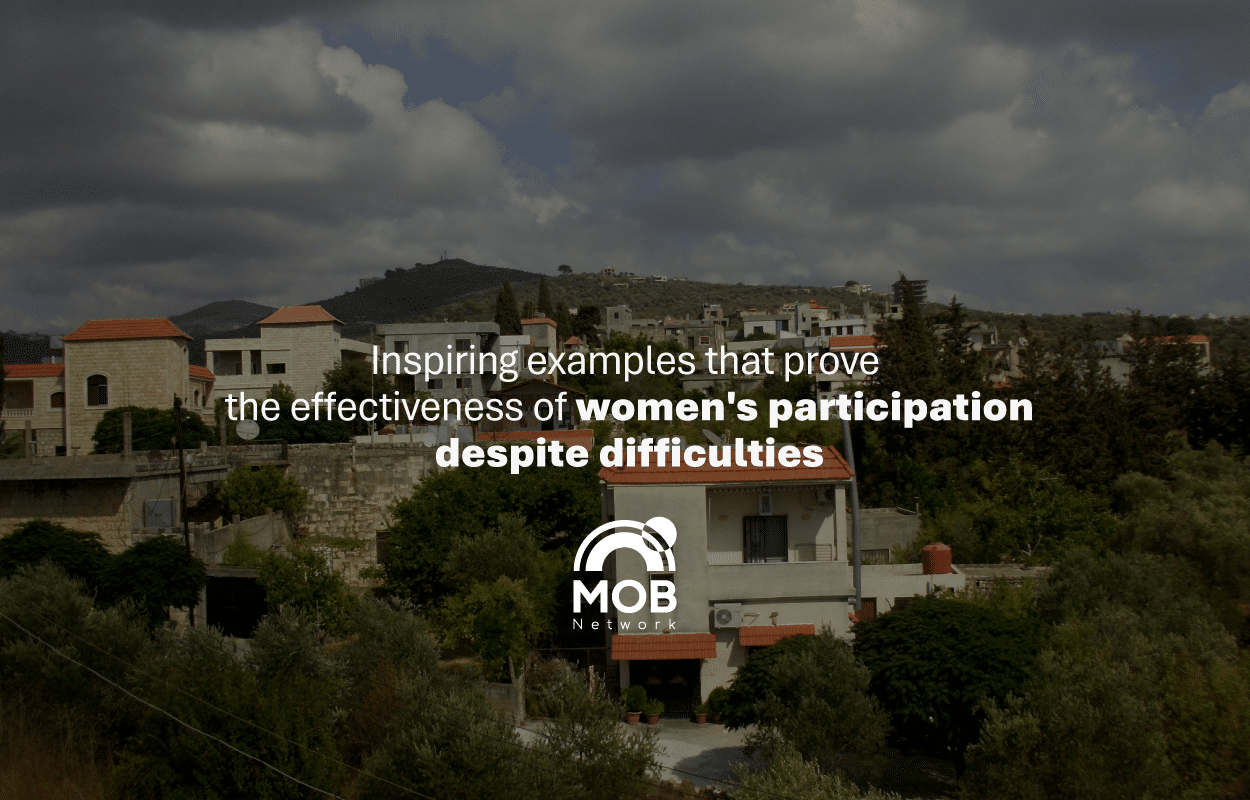
Peace stories over the past decades have stood as a testament to the ability of women to turn storms into horizons of hope despite radical challenges.
In Liberia, the women’s peace movement was legendary. As the civil war intensified, women, led by Leymah Gbowee, rose up to form the “Bargaining for Peace” movement. This movement provided a vivid example of nonviolent organizational power, as women organized peaceful strikes and sit-ins that put tremendous pressure on the warring parties to negotiate.
In Colombia, another bridge to peace was built during the peace negotiations between the government and FARC. The agreement’s makers realized that achieving sustainable peace required addressing women’s needs. A gender subcommittee was established, comprising representatives from both parties and women’s organizations. This committee worked tirelessly to review the agreement from a gender perspective to ensure the inclusion of women’s rights. This integration would not have been possible without the sustained pressure and technical engagement of women’s movements.
In Northern Ireland, peace stories were forged through collective action in local communities. Despite the limited representation of women in the cross-party negotiations for the “Good Friday Agreement”, women’s organizations from both Catholic and Protestant communities emerged to build bridges of communication and dialogue. These organizations focused on shared issues such as education, health, and care for victims of violence, contributing to a climate conducive to reconciliation.
True peace is not built with inked agreements alone, but with voices, tears, and will… and women are an integral part of this construction. Women’s participation is no longer an option that can be ignored or postponed, but rather an essential component of any peace that is meant to stand the test of time. While the road ahead is still full of challenges, real-life experiences and past successes prove that involving women in peacebuilding processes is not just a dream, but an achievable project, if there is political will and belief in their capabilities.
New Horizons Woven by the Fingers of Women as Peace Builders
Women will redefine the concept of peace, using their insights in places where it has long been ignored as an identity on the margins. The future of reconciliation will not only be shaped in the meeting rooms of formal organizations, but also built in places where war has ravaged the world, where children and adults have been left with the consequences of conflict. These insights will move peace from a state of forgetting to real action. Trust networks will be built in the affected communities and will consist of basic elements that can be used as an early warning system, and every conversation a woman facilitates between two conflicting parties will serve as a bridge to overcome deep differences.
A new language of mediation will emerge, based on calm and practical dialogue rather than elaborate speeches, and built on direct communication that reaches deep into the hearts of those affected by the conflict.
Women will transform the traditional constraints that have hindered their progress into means of achieving liberation, so that the role of the “guardian” becomes a moral tool for holding wrongdoers accountable, and the image of the “weak” becomes a means of defending the weak.
Ultimately, the future will be made by those who believe that true peace does not simply mean the end of fighting, but requires beginning the process of repair and rebuilding life before complete calm can be achieved.
Writing By: Raneem Al-Haj Hassan
Translated by: Aouni Al-Sammani

